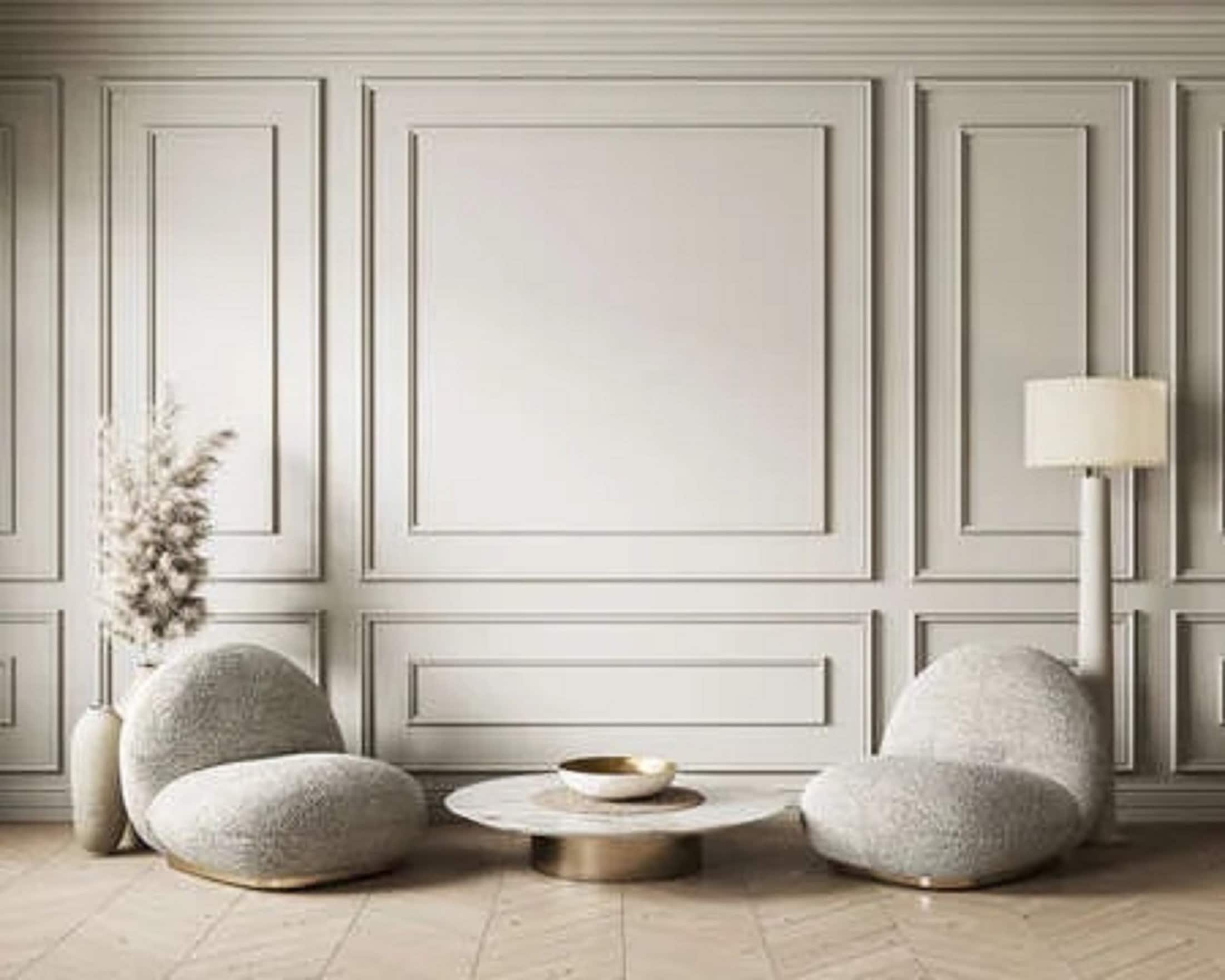Welcome to the beautiful world of molding wall decor! As someone who has spent countless hours experimenting with molding designs, I can assure you that the right moldings can elevate your home’s aesthetic dramatically. In this article, we’ll explore various types of moldings, their benefits, installation methods, and some creative ideas to inspire your next project. Let’s dive in!
What is Molding Wall Decor?
Molding wall decor refers to ornamental strips used to enhance the design of walls. They can range from simple cornices to intricate chair rails, transforming mundane spaces into visually stunning environments. Moldings serve both functional and aesthetic purposes.
Types of Molding Wall Decor
Understanding the types of moldings available is crucial for making informed design choices. Here’s an overview of the most popular types of moldings:
Crown Molding
Crown molding is installed where the wall meets the ceiling. It can add elegance and create the illusion of height in a room.
Chair Rail
Chair rails are horizontal moldings that run along the wall, typically about three feet above the floor. They were originally designed to protect walls from chairs but now serve a decorative purpose.
Baseboards
Baseboards are installed at the bottom of your walls and cover the joint between the wall and the floor, adding a finished look to any room.
Picture Rails
Picture rails are moldings placed high on the wall, used to hang artwork without needing to drive nails into the wall.
Panel Molding
Panel moldings are used to create framed sections on the walls, adding depth and dimension to flat surfaces.
Benefits of Molding Wall Decor
Opting for molding wall decor comes with numerous benefits:
- Aesthetic Appeal: Moldings enhance the beauty of your space.
- Increased Home Value: Well-installed moldings can boost your home’s resale value.
- Hide Imperfections: Moldings help conceal flaws in walls and ceilings.
- Style Versatility: Available in various styles, they can suit any decor theme.
How to Choose the Right Molding for Your Space
Choosing the right molding involves considering the overall style and color palette of your room. Here are some tips:
1. Consider Your Room’s Style
If your room has traditional decor, opt for ornate moldings. For modern spaces, sleek and minimalistic designs might work better.
2. Pay Attention to Scale
The size of the molding should complement the scale of the room. Larger spaces can handle more decorative moldings, while smaller rooms may benefit from simpler designs.
3. Color Coordination
Choosing the right color for your molding can make a significant difference. White moldings create a classic look, while color can add a contemporary flair.
Installation of Molding Wall Decor
Installing molding may appear daunting, but with the right tools and guidance, it’s achievable. Here’s a step-by-step guide:
Tools and Materials Needed
- Miter saw
- Nail gun or hammer
- Level
- Stud finder
- Wood glue
- Paint or stain (optional)
Step-by-Step Installation Process
- Measure and Mark: Measure the lengths of your walls and mark where the molding will go.
- Cut the Molding: Use the miter saw to cut the molding to the appropriate lengths and angles.
- Secure the Molding: Use a nail gun or hammer to attach the molding to the wall, ensuring it’s level.
- Fill Gaps: Fill any gaps or nail holes with caulk or wood filler for a smooth finish.
- Paint or Stain: If desired, paint or stain the molding to match your decor.

Creative Ideas for Using Molding Wall Decor
Here are some innovative ways to incorporate molding into your decor:
1. Accent Walls
Use panel molding to create an accent wall with geometric designs. It adds texture and interest.
2. Ceiling Medallions
Install a ceiling medallion around a light fixture to create a stunning focal point.
3. Framed Artwork
Use picture rails to frame your favorite pieces of art without damaging the walls.
4. Custom Shelving
Enhance shelves by adding molding at the edges for a polished and professional look.
Comparison of Molding Materials
Different materials can affect the look, durability, and cost of molding. Here’s a comparison table:
| Material | Cost | Durability | Maintenance |
|---|---|---|---|
| Wood | High | Very Durable | Requires Painting/Staining |
| Polyurethane | Medium | Good | Low Maintenance |
| MDF (Medium Density Fiberboard) | Low | Moderate | Requires Painting |
| Plaster | Medium to High | Very Durable | Requires Touch-ups |

Common Mistakes to Avoid When Installing Molding
Here are a few pitfalls to be aware of:
- Neglecting Measurements: Always double-check measurements before cutting!
- Choosing Incorrect Angles: 45-degree cuts are standard for corners; avoid mistakes by practicing first.
- Ignoring Gaps: Failing to fill gaps can leave an unprofessional finish.
- Skipping Paint Prep: Proper prep ensures paint adheres well and looks smooth.
FAQs About Molding Wall Decor
What is the difference between crown molding and baseboards?
Crown molding is placed at the junction of the wall and ceiling, while baseboards are positioned at the bottom of walls, where they meet the floor.
Can I install moldings myself?
Yes, with the right tools and a bit of patience, most homeowners can install moldings themselves.
What type of molding is best for a modern decor style?
Sleek and minimalistic moldings made from materials like polyurethane or MDF are ideal for modern decor.
How do I clean and maintain moldings?
Simple dusting and occasional wiping with a damp cloth are usually sufficient. If painted, touch-ups may be necessary.
